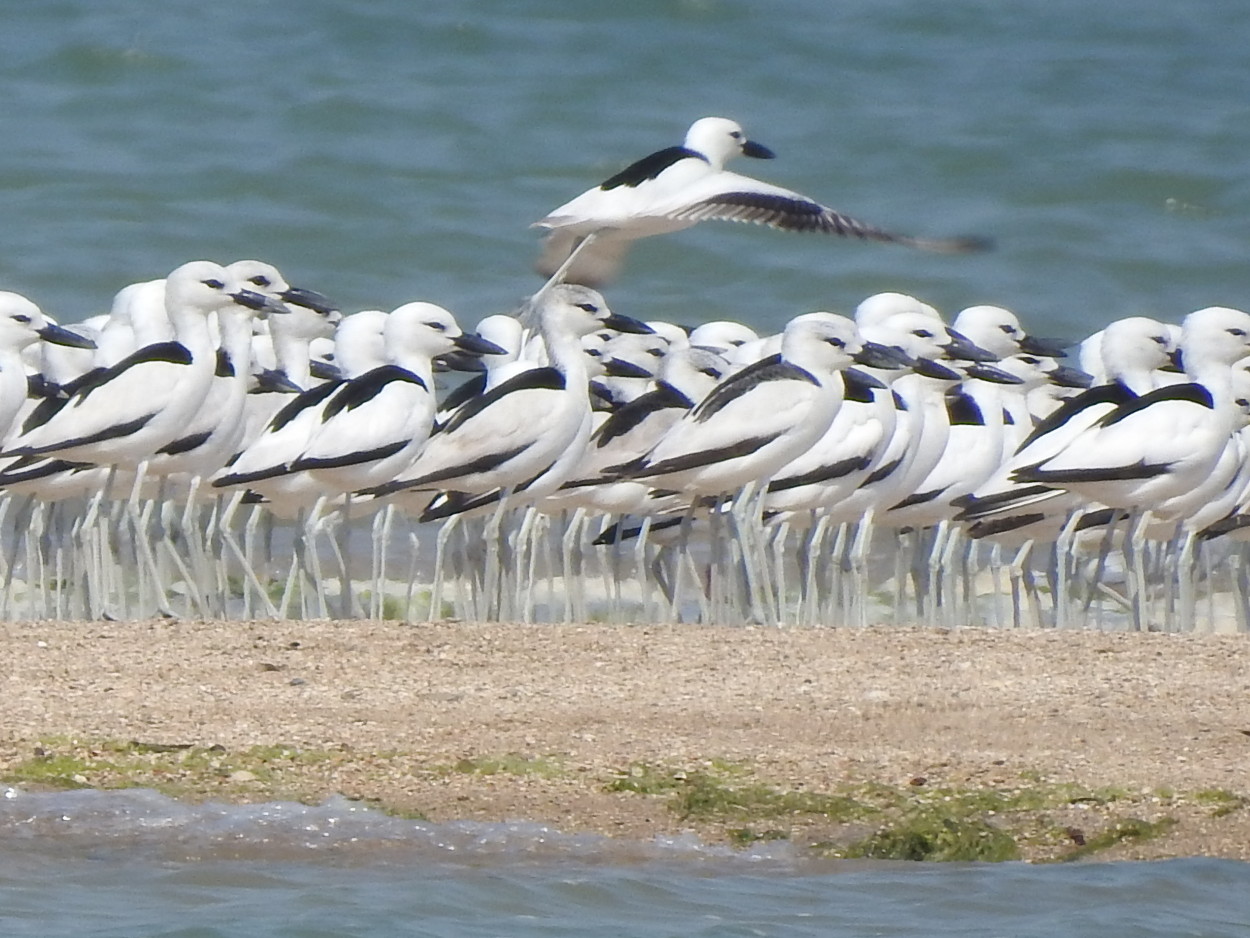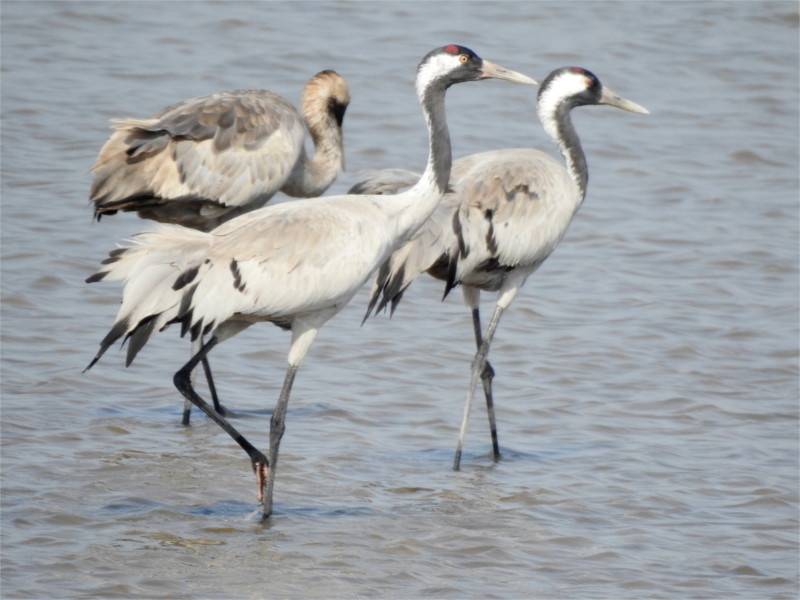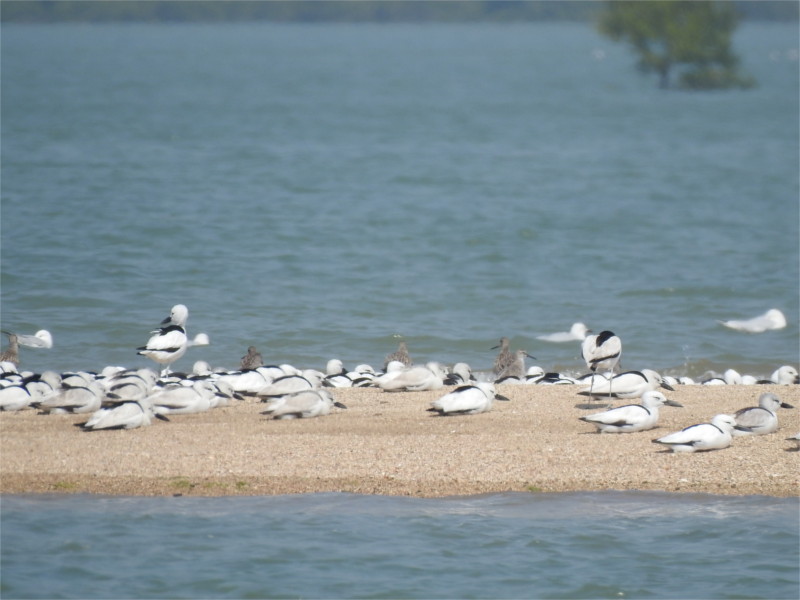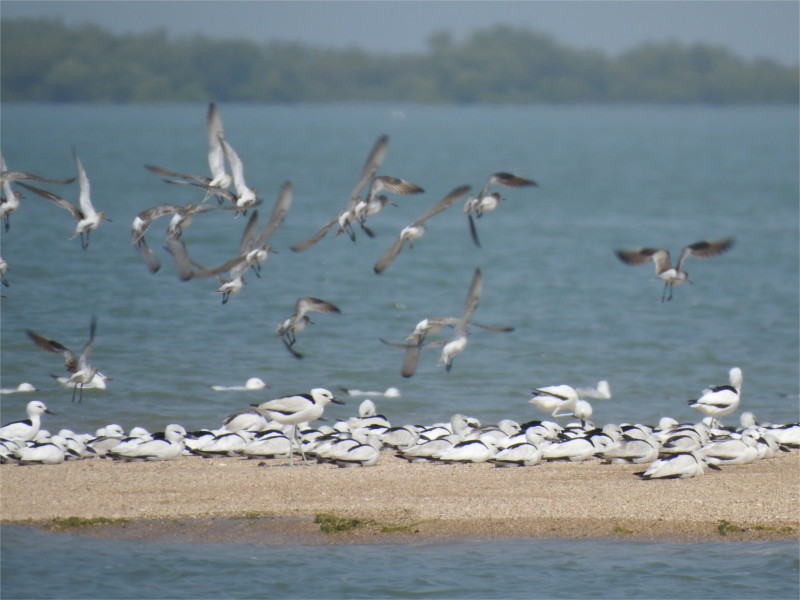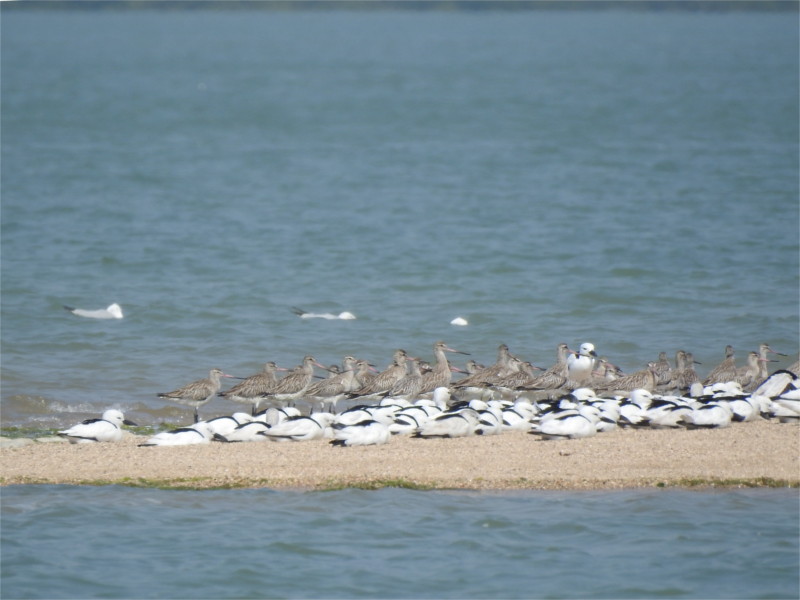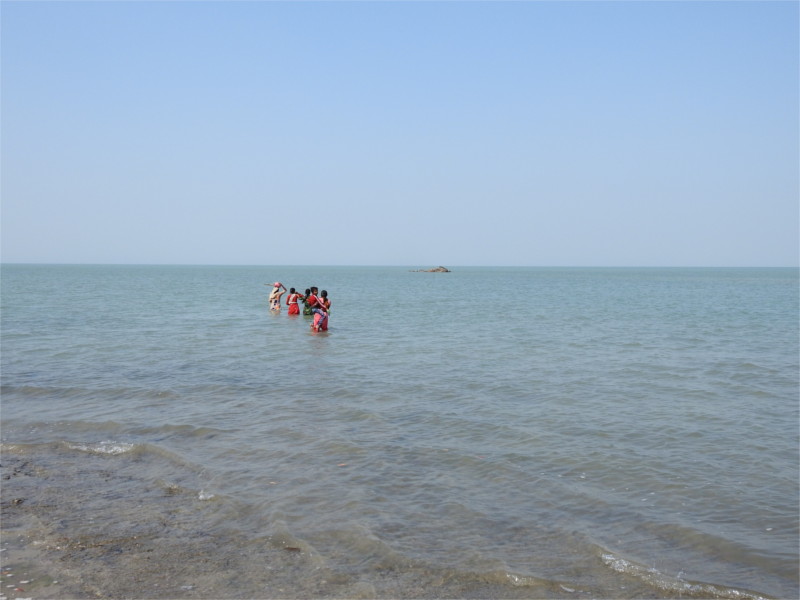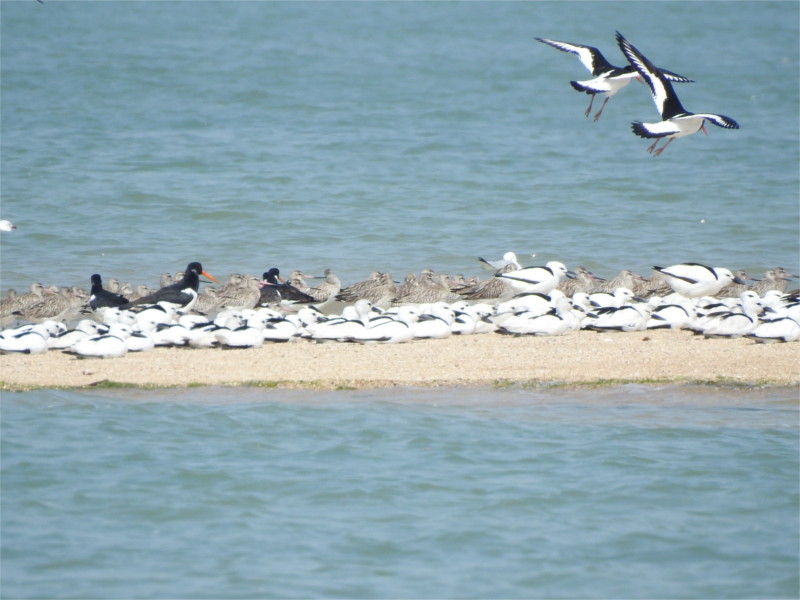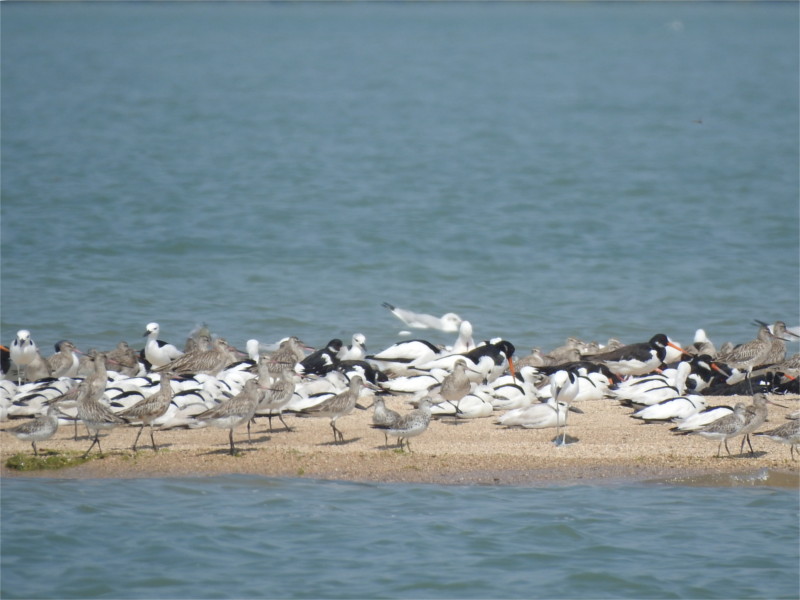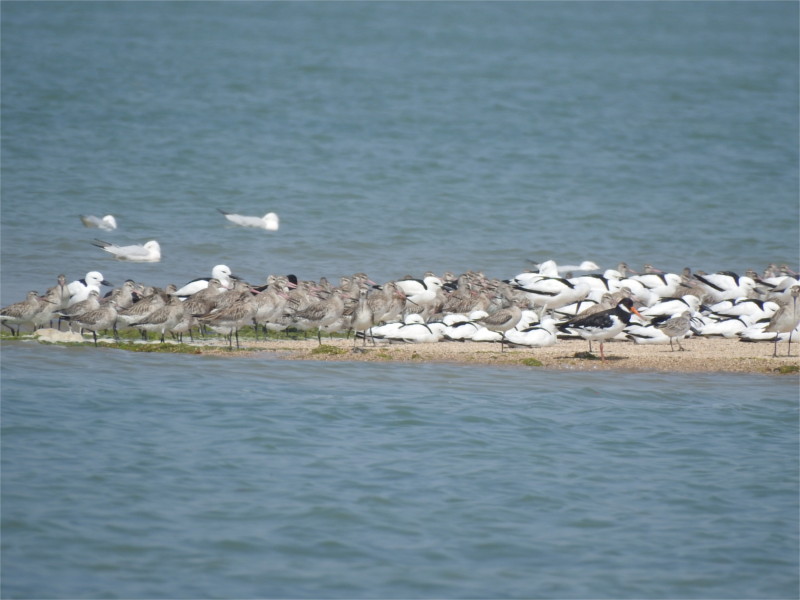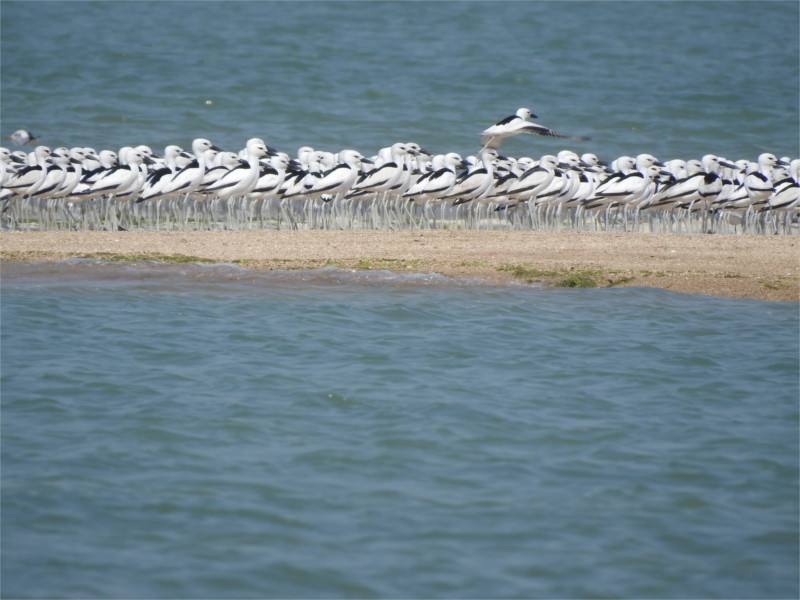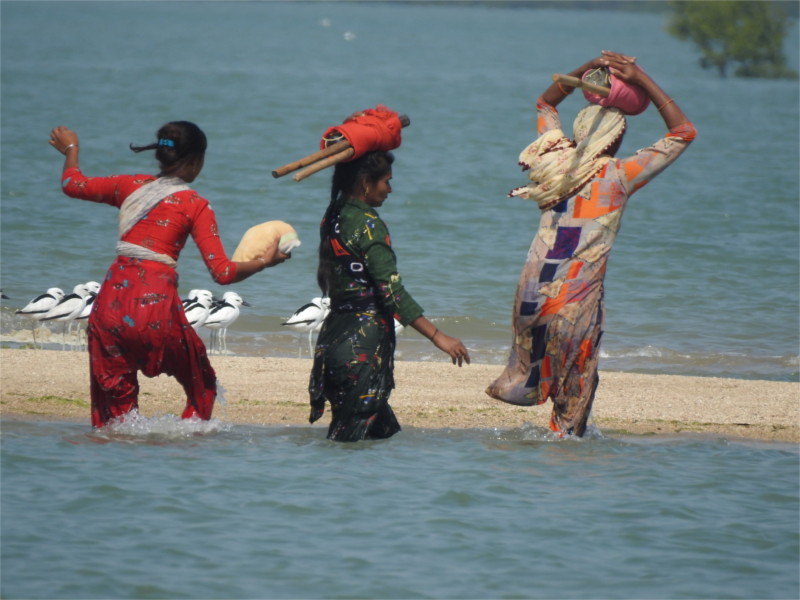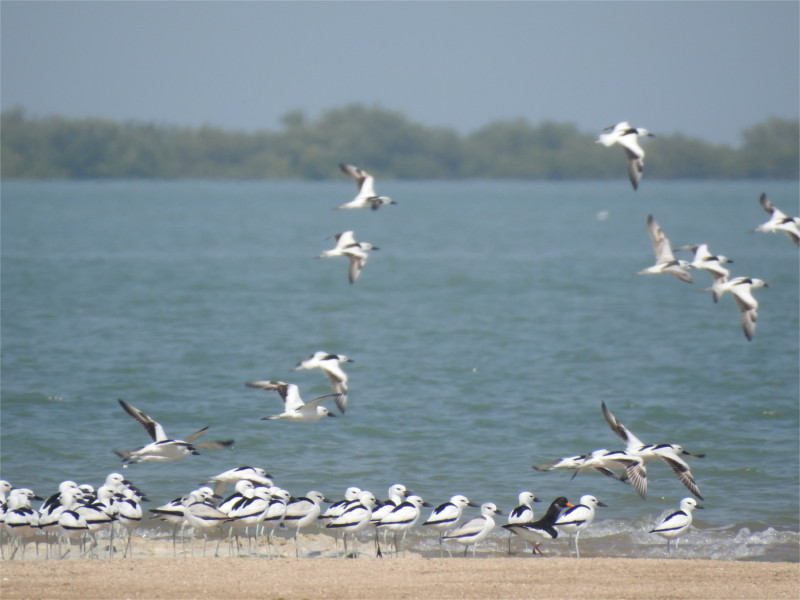On a sand bank near Little Warsaw, Jamnagar, I saw a mass of crab plover (Dromas ardeola) roosting. These unmistakable birds, the sole member of the family Dromadidae, can be found along the shores of the Arabian Sea and as far down the east coast of Africa as Durban. Interestingly, you can see them across the Indian Ocean in the Andaman islands and even as far east as Kuala Lumpur in winter, but you are unlikely to spot them on the east coast of India. During the Indian Ocean monsoon they nest in large communes in the Persian Gulf, the Gulf of Oman, the Gulf of Aden, and the Red Sea, and disperse across the Indian Ocean in winter. Their breeding habits are so different from that of most plovers (they dig burrows, their eggs are completely white, they continue feeding their young through winter), that I would love to see a colony some day.
There aren’t many places on WordPress where bird watchers can share posts. If you post any photos of birds this week (starting today and up to next Monday), it would be great if you could leave a link in the comments, or a pingback, for others to follow. You don’t have to post a recent photo, nor do you have to post a photo of the same bird as mine. It would be helpful to give as much information as you can, for example which bird it is, where and when you saw the bird, any behaviour you found interesting, or anything else you wish. You might consider using the tag “Bird of the Week” to help others search for old posts. I hope you’ve had the time to look at what others have added in this week and earlier.
